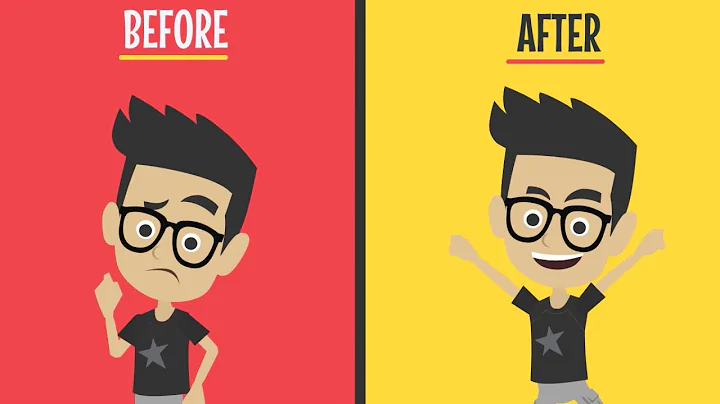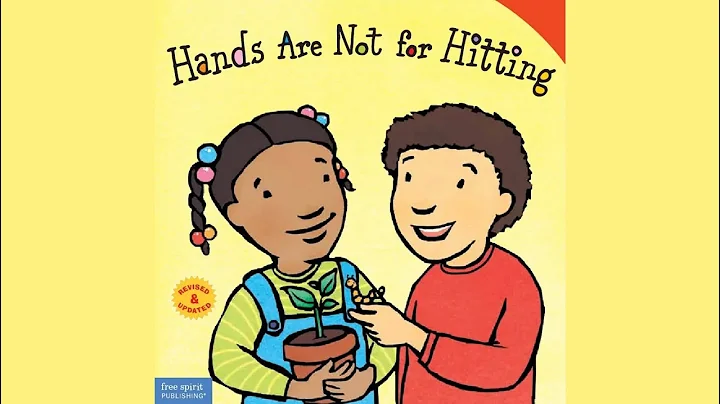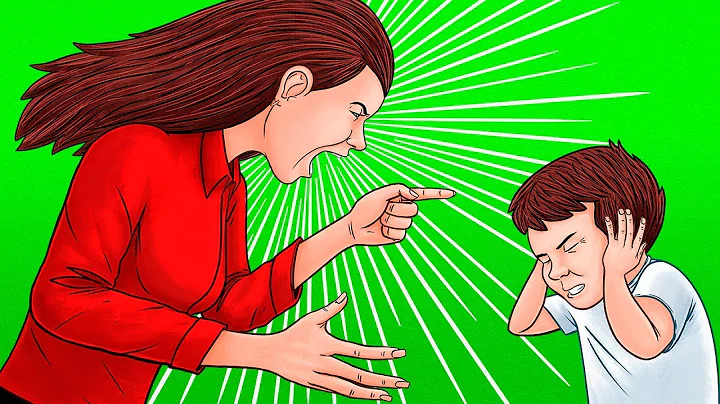Putting your hands down and sitting still is the standard for many people to determine whether children are focused . It is also the requirement of teachers in schools for children.
We hope that every school day for children can be broken down into exercise and sitting still .
Break time: running around
Physical education class: running around
All other classes and going home to do homework: Put your feet on the ground and lean your butt on the chair (don’t turn the pen! Don’t buckle the eraser! Don’t shake your feet! Don’t twist) Twist! ......)
I have received too many messages from mothers saying that they want to take their children to early education classes and some learning courses in advance, because they hope that through a standardized classroom environment, their children can adapt to and listen to the teacher's instructions early. , sit still and study attentively.
When many mothers complain that their children are not focused, they also describe that their children are always touching here and there, playing with erasers and pencils. Their bodies are like snakes sliding under the table, or they are shaking their feet ...

The writing pen can suddenly fly out.

It is not appropriate to wear skirts during online classes.


’s little hands have nowhere to rest...
is most upset during online classes, because she is usually out of sight and out of mind, but I can’t help but see her throwing erasers, playing with pen holders, and turning chairs in class. When the teacher talks about the rules, she But looking for something under the table... It's hard not to regard sitting quietly as a way to measure whether a child is serious.
But sitting still is really difficult for many children. It is almost impossible to ask children not to "move their hands and feet". They seem to be a perpetual motion machine, no matter what they are doing, they are always making small movements.

In the past, I was like everyone else, hoping that my child would calm down for a while, because I would be worried -
moving around like this.
Can you really do your homework well? Can you listen to the class?
I have been "complained" by the teacher a lot After this time, I really seriously considered whether my girl had ADHD, so I checked a lot of information about ADHD, and found that
allows them to move around while studying, which can actually improve their efficiency! !
In other words, if children miss some information in class, it does not mean that they will gain more by sitting still, but they should consider other ways to increase the "absorption" of knowledge.
For those children who are really difficult to "sit still" and find it difficult to enter a state of concentration, they will indeed miss some information when they first enter school, but this is like a child's gradual development and growth process, which seems to be impossible to skip.
First of all, part of the reason why children keep moving around is because they really have a lot of energy that needs to be "vented" - in other words, if you want them to stay still, you have to let them move enough first!
And it not only allows them to exercise more and release more energy, but also releases their energy more frequently, because it is really easy for them to recharge!
I need to explain here that we cannot use adults’ energy standards to measure children. It is normal for children to have more energy than adults.
First, kids have more energy because they have more mitochondria . Mitochondria are tiny "energy factories" found in every cell.
Their job is to convert glucose into usable energy to power our muscle fibers and neurons. Children have more mitochondria than adults, so they can run around outside for hours without getting tired.
(Related reading: "How many adults can one baby outlast? Science tells you the principle of long standby time for children")

In addition, children's brains are still in a highly plastic stage . Things that are already accustomed to us are super novel to them, so they are easily attracted away their attention. Looking at this and that, in the eyes of adults, they feel that their attention is too unfocused. In fact, they are "divergent learning" and absorbing widely.

Finally, children have more energy, because they live less stressful lives . Although we have a day at the office and the kids have a day at school, they spend more of the day relaxing or playing with friends. In short, 's pressure is not as great as ours. They are still at a young age and rarely worry about it.
So children move around a lot of the time because they have extra energy and they want to release it.

In addition to the need to "move more" in terms of energy, children moving around while listening to classes and doing homework is not only unintentional, but it will not necessarily make the child's learning efficiency lower. On the contrary
learn on the move, and the learning efficiency will be higher.
Although it sounds outrageous, you will really have better concentration when studying while moving than when sitting, , and this is scientifically based.
A 2016 study suggests that children who jump, squat and move their bodies during math and spelling may learn more effectively than students in typically sedentary classrooms.
Marijke Mullender-Wijnsma, a researcher at the Center for Sports Science at the University of Groningen in the Netherlands, said: "Children want to move around, and they learn a lot by moving their bodies. Children can also learn sitting at a table, but they learn by being active. Activities learn more."

The study, involving 500 children in grades 2 and 3 in the Netherlands, found that those who learned in physical activity classes tested better academically than those who sat at a desk. The kids are better.
In the two-year study, half of the seven- and eight-year-olds received active learning sessions in maths and language for 30 minutes three times a week during each of the 22-week sessions. The control group studied in ordinary classrooms.
The lessons in the experiment were designed moderate to vigorous physical activity and focused on tasks involving repetition and memorization such as mathematical calculations and spelling. To ensure the rigor of the test results, the academic level of students was measured before the intervention and was measured multiple times throughout the process.
Children learn a range of movements including jumping, long and small steps, squats and empty punches as they recite answers to questions. For example, when spelling the word "dog" out loud, they might jump three times—one for each letter. Or to solve a 2x4, they might squat eight times while counting.
Researchers found that after two years, those in the active group showed greater gains in math speed, general math ability and spelling - equivalent to a four-month head start over the control group.
is incredible. It seems that is used for both and , but the learning results are impressive.
Harvard Medical School Dr. John Rate also shared in ADDitude's podcast about ADHD, and the theory that walking around in learning is helpful for the creativity and divergent thinking ability of children with ADHD.


Children will react faster when walking around, and
thinking can also be more divergent.
Many times we see children moving around like monkeys when doing homework or in class, or their buttocks will leave the stool after a while. It is most likely because the brain is adjusting spontaneously. Through these Seemingly random little movements opened the door to his thinking, turned on his switch, and turned on his sleepy cerebral cortex.

An active mind requires an active body. Children can become more restless and distracted by sitting for long periods of time. can increase children's memory, optimize cognitive functions, and concentrate when moving.
Not only do you learn better while walking around,
You also concentrate better when you sit down after walking around
than when you sit down
Physical activity levels, according to a 2020 study published in the Journal of Physical Activity and Health Taller children “have consistently been shown to be positively associated with a variety of academic performance factors, including cognitive function, academic behavior, and school performance. The study collected data on more than 37,000 U.S. children aged 6 to 17 and found that in addition to improving cognitive skills, physical activity may have a positive impact on classroom behavior.

A 2018 study reviewed 26 previous studies on physical education A study of the impact of activity on academic performance found that children who participated in extra physical activity in schools performed better in reading and math.
The study, published in the journal Pediatrics, involved more than 10,000 children aged 4 to 13. Research has found that physical activity, especially physical education, can improve classroom behavior because if children can move, they won't have as much excess energy and will be able to concentrate in class, helping to improve Academic performance.

Children who are more active show better attention, faster cognitive processing, and more successful memory retention than children who sit still all day. Staying physically active by increasing flow to the brain. Blood flow promotes mental clarity, making activity essential for learning as well as physical and neurological health.
Dr. John Rate's presentation shared the principles and evidence that the brain becomes more active after exercise
It is difficult for younger children. The longer attention span on a single event is determined by their brain development stage . Since the prefrontal cortex has not yet fully developed , they control the flow of sensory information (such as pictures, visual information) into and out of the thalamus. 's ability is still weak, and their attention is easily distracted by the various information flooding into the brain.
Therefore, they cannot keep their brains active and maintain continuous thinking and concentration on one thing

when children are exercising. When will open the attention system , which means they can focus better, be able to handle more challenges, and be able to persist for longer, exercise can stimulate the prefrontal lobes of our brains to make them better

The left side is the brain state of a sitting child, and the right side is the state after the child has walked for twenty minutes. You can see that the brain on the right side is obviously active. The brain on the left.

You can also see in this picture that whether it is a child with ADHD or an ordinary child, the brain activity after exercise is much greater than after reading.
Therefore, we often say work hard and play hard. There is a certain scientific basis.
I don’t know if you have watched "Xiaodoudou by the window". The Ba Academy course taught by Xiaodoudou is actually designed to be very consistent with the research findings mentioned above.
#1
There is a walking class in the course
After lunch, Xiaodoudou and everyone chased each other around the campus for a while. When the students returned to the tram classroom, the female teacher asked everyone: "Students "Everyone studied very well today. What do you want to do this afternoon?" Before Xiao Doudou could think of "What should I do...", the students were already shouting: "Go for a walk!"
"Okay, let's go then!"
The teacher said and stood up. Everyone hurriedly opened the tram door, put on their shoes and ran out. Although Doudou often goes for walks with her father or the puppy Rock, she doesn't know that she can go for walks in school, so she is surprised. However, Xiaodoudou liked walking the most, so she hurriedly put on her shoes.
Later, Xiao Doudou realized that the teacher wrote all the exercises for the day on the blackboard during the first class in the morning. When everyone worked up the energy to finish all the exercises in the morning, they usually went out for a walk in the afternoon. . In this regard, both first graders and sixth graders are the same.
As soon as they left the school, nine first-grade classmates surrounded the female teacher and walked along a small river. Rows of tall cherry trees are planted on both sides of the river. Until a few days ago, they were still full of cherry blossoms. In addition, there are endless fields of cauliflower. Today, the river has been filled in, and Liberty Hill, which until recently was mostly crop fields, is packed with apartments and shops.
"We are going for a walk at Jiupin Buddhist Temple!" said the girl wearing a dress with a bunny on it. Her name is Shuozi. Next, Shuozi told Xiaodoudou: "We saw a snake next to the Jiupin Buddha Pond a few days ago!" "I heard that a meteor fell into the ancient well of Jiupin Buddhist Temple!"
Next, Everyone had a great time. Some looked at the big belly of and laughed non-stop; some, although a little timid, still poked their heads in to take a look at the Buddha statues in the dim Buddhist hall; some children stepped on stones with their feet. In the remaining big footprints of the "tengu" on the tomb, they were comparing their sizes; some children gathered around the pool to greet the people who were rowing boats; some children were playing kicking stones and jumping square by using the black and smooth oilstone slabs around the tomb. Grid game. Especially Xiaodoudou, who came for a walk for the first time, was so excited that she shouted out again and again every time she saw something new.
#2
Climbable trees are provided on campus.
Students in Ba Academy have chosen trees in every corner of the campus specifically for them to climb up and down, so Xiaodoudou’s tree is also on the edge of the campus. It grows under the corner of the path facing Jiupin Buddhist Temple. The tree is very thick and very slippery to climb up. If you make it well, you can climb to about two meters. You can ride your legs on a very wide branch, like sitting in a hammock. It is very comfortable. During recess or after school, Xiaodoudou often sat there and looked into the distance, or looked up at the blue sky, and sometimes stared at the passers-by on the road.
#3
Melody Education Method
The principal also created a "melody education method" in which the principal plays the piano on the small stage in the auditorium. To the rhythm of the piano, the students started walking around from their favorite places. You can walk wherever you want, but if you go against the flow of people, you will bump into others, which is unpleasant, so you naturally walk in the same direction and form a circle.
However, there is no need to line up, just walk forward without restraint. But your ears should pay attention to the rhythm of the music. If you think it is in two beats, when you take steps, you should wave your arms up and down like a band conductor to beat two beats. Don't make a "click, click" sound with your steps, but don't stand on your toes like you are dancing in ballet. So how to go? The principal
said: "Relax your body, swing your whole body naturally, drag your toes on the floor, just like pulling your thumb, and just move forward." In short, no matter what kind of posture, the most fundamental requirement is to be relaxed and comfortable, so Each student can decide how they want to move. If the beat of the music is three beats, both hands will immediately change to three beats. The footwork also needs to be in time, not fast and slow now. Moreover, the movements directed by two hands must be up to six beats, which requires constant changes in movements. For example, when playing four beats, the action is: "First go down, then go up, then swing parallel, and then go up." This is relatively easy. When it comes to five beats, the action is: "First go down, go up, and then go up." "Front, move to one side, and then move upward." At six beats, the action becomes more complicated: "First go down, wrap up, then move forward, then move from the front to the chest, then move to one side, and then again." Up.”
So as the beat continues to change, the movements become more and more difficult. What's even more difficult is that the principal often says loudly while playing the piano: "Even if the piano music changes, don't change your movements immediately!" For example, everyone starts playing in the rhythm of two beats. Move around, and then the piano changes to three beats. But even if you hear music in three beats, you still have to move in two beats. The principal seems to think this way: Although this is very difficult, it is at this time that children can develop their ability to concentrate and strong self-control. The principal of
said: Use this melody method to help the harmonious balance of the spirit and body. As long as it can arouse imagination and improve creativity, the goal has been achieved.
can see that the children's courses have always been a combination of sports and learning, which has very effectively stimulated the children's prefrontal lobes, and the children have always been in a state of high concentration and creativity.
So in fact, does not need to be too obsessed with whether the child can sit safely in the chair. , this is a normal behavior. Children love to be active. Although it sometimes bothers adults, this is a step-by-step process. Instead of suppressing their active nature, it is better to guide them on the basis of letting nature take its course. On the contrary, there will be unexpected gains. .
But this also extends to another problem. When at home, children can generally move around and study, but sometimes at school, there is no way for them to move around in other public places. What to do?
What can parents do?
1 If you want to reduce moving around between studies, you can help this through after-school activities and long walks . That way it won't be an issue in the classroom. Make sure they also sleep well and eat a healthy, sustainable diet. But don’t let your child get too tired, because it’s harder for your child to stay still when he’s tired.
2 Consider giving your child a toy that can hold in his hand. If your children are unable to move their hands and feet, buy them something that they can hold in their hands and squeeze or press. It can also make them feel that they are moving. Even in a quiet state, it will help them Stay tuned .

3 Make sure your child gets a balanced diet. Low dopamine may actually be caused by a lack of zinc, magnesium and iron - so make sure they are eating plenty of leafy green vegetables and meats . Omega 3 fatty acids may also be able to increase levels of dopamine .
4 Break down your child's learning requirements into simple steps and write/draw prompts. requires children to be distracted because of too long instructions that they cannot remember. In addition, discussing with the teacher to have the child sit closer to where they came from may also reduce distractions and make it easier to concentrate.
Reference:
【1】 Active for Life,If we want children to learn, we need to let them move.
https://activeforlife.com/kids-movement-learning/#:~:text=Movement%20enhances% 20learning%20According%20to%20a%202020%20study,including%20cognitive%20functioning%2C%20academic%20behavior%2C%20and%20school%20grades.%E2%80%9D
【2】 Youth fit, KIDS WHO MOVE WHILE LEARNING MAY ABSORB MORE, STUDY SAYS.
https://www.youthfit.com/blog/kids-who-move-while-learning-may-absorb-more-study-says
【3】 PSY Post, Let children move around, stand or walk in the classroom. You'll see the difference
http://preventchildabuse.org/images/docs/emotionalchildabuse.pdf.
【4】Help Guide, Child Abuse and Neglect.
https://www.psypost.org/2015/ 07/let-children-move-around-stand-or-walk-in-the-classroom-youll-see-the-difference-35944
【5】Education Week, Learning in Motion: Bring Movement Back to the Classroom.
https: //www.edweek.org/teaching-learning/opinion-learning-in-motion-bring-movement-back-to-the-classroom/2017/08#:~:text=Inviting%20children%20to%20move%20around %20more%20in%20the,purpose%20of%20an%20exercise%20that%20requires%20physical%20activity.
【6】ADDitude,Free Webinar Replay: The Exercise Rx for ADHD: How Movement Improves Attention, Working Memory, and Executive Functions .
https://www.additudemag.com/webinar/exercise-adhd-executive-functions/
Start from the root cause and explore 7 mistakes that affect children’s concentration and their solutions
After the parent-teacher meeting, I cried...
Children What should I do if I always “can’t sit still”? Here are 3 tips for you
If you like it, please forward and share:)
Some of the pictures in this article come from the Internet.
Please do not reprint to other public accounts without permission.
Please leave a message in the comments to obtain content authorization.
follows "Chen Xiaoshu in Summer",
replies with the following keywords, and you can see the corresponding push.
replies [Pregnancy] Pregnancy preparation knowledge, pregnancy pain, pregnancy nutrition, pregnancy beauty, etc.;
replies [Breastfeeding] Breastfeeding, insufficient breast milk What to do, ingredients of breast milk, medication during lactation, etc.;
replied to [milk powder] formula milk knowledge and bottle feeding;
replied to [mastitis] what to do with engorged milk, excessive breast milk and how to express milk for feeding;
replied to [eczema] understanding babies Eczema;
reply [Sickness] About common diseases of children such as colds, snoring, fever, cough, constipation;
reply [Sleep] Summary of infant sleep knowledge, newborn sleep safety, etc.;
reply [Head shape] How to shape your baby’s beautiful head type;




















![Sleep In God's Word [Christian Meditation To Let Go of Pain, Depression, Anxiety & Insomnia] - DayDayNews](https://i.ytimg.com/vi/qBuzN1dP06M/hq720.jpg?sqp=-oaymwEcCNAFEJQDSFXyq4qpAw4IARUAAIhCGAFwAcABBg==&rs=AOn4CLBJK1xenFbuhFwVquiwdghsm3mR0w)
